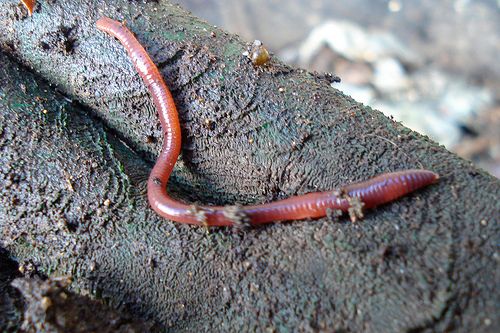Costs High Quality Red Wiggler Worms - Enhance Your Garden's Fertility
Costs High Quality Red Wiggler Worms - Enhance Your Garden's Fertility
Blog Article
Maximizing the Perks of Red Wiggler Worms: A Comprehensive Handbook for Home Gardeners and Urban Farmers
In the world of sustainable gardening methods, red wiggler worms stand as unhonored heroes, quietly transforming organic waste into nutrient-rich spreadings that can work marvels for dirt wellness. As home garden enthusiasts and metropolitan farmers progressively seek eco-friendly and affordable ways to enhance their yards, the possible advantages of using the power of red wigglers can not be overstated. From minimizing kitchen waste to cultivating healthier plants, the usage of these modest creatures provides a plethora of advantages. By exploring the details of exactly how to successfully care for and make the most of the advantages of red wiggler worms, individuals can open a wealth of possibilities for improving the sustainability and efficiency of their gardening ventures.
Comprehending Red Wiggler Worms
Red Wiggler worms, renowned for their effective composting abilities, are a species of earthworms extensively used in vermiculture practices. These worms, medically understood as Eisenia fetida, grow in decaying natural product, making them ideal candidates for composting.
One key feature of Red Wiggler worms is their reproductive rate. These hermaphroditic creatures possess both women and male reproductive organs, permitting them to replicate swiftly under positive conditions. A fully grown Red Wiggler can generate multiple children in a short duration, making sure a stable populace within a composting system.

Establishing a Worm Container
When establishing a worm bin for vermiculture functions, proper prep work and interest to information are essential for creating a favorable environment for Red Wiggler worms. Begin by picking an ideal container for your worm bin.

Location the worm bin in a great, dark place away from straight sunshine and severe temperature levels. By following these actions, you can establish up a prospering worm bin that will successfully refine natural waste right into nutrient-rich vermicompost for your yard.
Feeding and Preserving Worms
Making sure a balanced and healthy diet regimen is essential for the wellness and efficiency of Red Wiggler worms in a vermiculture system. It is important to stay clear of feeding them citrus fruits, onions, garlic, dairy items, meat, and oily foods as these can be harmful to the worms or cause unpleasant smells in the bin.
Correct dampness levels are likewise critical for the health of Red Wiggler worms. The bed linens ought to seem like a damp sponge, offering adequate moisture for the worms to breathe via their skin. Routinely inspect the dampness levels and change by adding water or dry bed linen material as needed. Additionally, maintaining appropriate temperature problems in between 55-77 ° F(13-25 ° C )will make sure optimum worm task and reproduction. By carefully checking their diet plan, dampness, and ecological conditions, home garden enthusiasts and metropolitan farmers can sustain a effective and healthy and balanced Red Wiggler worm population for composting purposes.
Collecting Worm Spreadings
To effectively extract nutrient-rich worm spreadings from the vermicompost, an organized harvesting procedure is vital for taking full advantage of the composting advantages. The very first step in harvesting worm castings is to encourage the worms to move to one side of the bin.
After the spreadings have been gathered, it is necessary to divide read this post here any continuing to be worms from the castings to stay clear of hurting them during storage space or application. One effective approach is to produce conical stacks of spreadings under brilliant light. Worms will intuitively move far from the light, permitting simple splitting up and removal.
Finally, the collected worm castings need to be visit site kept in a great, dark, and dry place to maintain their high quality and performance as a nutrient-rich soil modification. By following these actions, home gardeners and metropolitan farmers can maximize the benefits of red wiggler worms in their vermicomposting systems.
Utilizing Worm Castings in Gardening
The unification of nutrient-rich worm spreadings into garden dirt can considerably improve plant development and general dirt health. Worm castings, likewise called vermicast, are a natural fertilizer produced by red wiggler worms as they break down organic matter. These spreadings are rich in necessary nutrients like nitrogen, phosphorus, potassium, and advantageous microorganisms that advertise plant development and enhance soil framework.
When making use of worm spreadings in horticulture, it is necessary to mix them thoroughly into the soil or use them as a leading dressing around plants. The slow-release nature of worm spreadings ensures a constant supply of nutrients to plants with time, lowering the threat of nutrient leaching and promoting long-term dirt fertility. In addition, worm castings help boost dirt oygenation, water retention, and microbial activity, developing a healthy setting for plant origins to flourish.

Verdict
In verdict, the usage of red wiggler Discover More Here worms in home horticulture and urban farming can considerably benefit soil wellness and plant growth. By recognizing how to establish up and maintain a worm bin, feed the worms effectively, and harvest their nutrient-rich castings, garden enthusiasts can make the most of the advantages of these earthworms.
In the world of sustainable horticulture methods, red wiggler worms stand as unhonored heroes, quietly transforming natural waste right into nutrient-rich spreadings that can work wonders for soil health and wellness.When developing a worm bin for vermiculture functions, appropriate prep work and focus to information are important for producing a favorable setting for Red Wiggler worms. The initial action in collecting worm castings is to motivate the worms to move to one side of the bin. Worm castings, likewise understood as vermicast, are a natural fertilizer produced by red wiggler worms as they break down organic matter. By understanding how to establish up and keep a worm container, feed the worms appropriately, and gather their nutrient-rich spreadings, gardeners can maximize the advantages of these earthworms.
Report this page